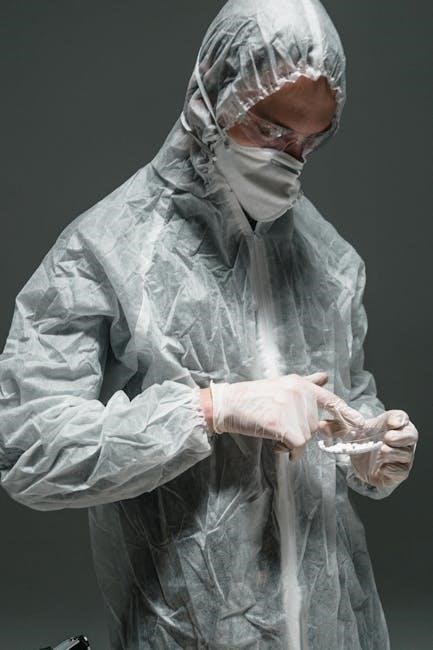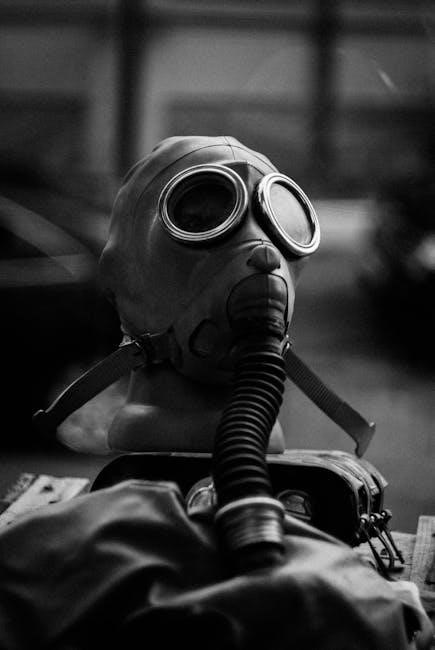Magnesium Welding Rods: Health Hazards Overview
Welding magnesium presents distinct health hazards. It is necessary to comprehend and manage the risks to guarantee worker safety. The inhalation of magnesium fumes and dust particles pose a primary concern.
Magnesium welding, while effective, presents unique challenges and safety considerations. Due to magnesium’s high reactivity, especially with oxygen, specialized techniques and precautions are crucial. Unlike steel welding, stick welding with magnesium is not feasible, necessitating inert gas shielding methods. Mastery of aluminum welding is generally recommended before attempting magnesium, due to the complexities involved such as maintaining a tight arc and the potential for obstructed arc visibility, often due to zinc reactions. The flammability of magnesium requires strict fire prevention strategies. This includes the use of personal protective equipment (PPE) and proper ventilation. Understanding these basics is essential for safe magnesium welding practices.
Hazards Associated with Magnesium Fumes
Welding magnesium exposes workers to fumes and dust, irritating the respiratory system. This inhalation may lead to metal fume fever and respiratory sensitization, posing significant health risks if not addressed.
Respiratory System Irritation
Inhaling magnesium fumes during welding can significantly irritate the respiratory system. This irritation leads to discomfort and potential inflammation of the throat and airways. The fumes and dust particles generated during magnesium welding can cause acute irritant-induced asthma in susceptible individuals, further compromising respiratory function.
Exposure to these fumes may trigger coughing, wheezing, and shortness of breath, impacting a welder’s ability to work efficiently and safely. Prolonged or repeated exposure can exacerbate existing respiratory conditions and potentially lead to chronic issues. Therefore, welders must use adequate ventilation and respiratory protection.
Metal Fume Fever
Metal fume fever is a temporary but debilitating illness caused by inhaling fine metal particles, including magnesium oxide, during welding; Symptoms typically manifest 4 to 12 hours after exposure and resemble the flu, including fever, chills, muscle aches, and nausea. The condition is often self-limiting, resolving within 24 to 48 hours.
However, repeated episodes can lead to more severe health problems. Although generally not life-threatening, metal fume fever can significantly impact a welder’s productivity and well-being. Proper ventilation and respiratory protection are crucial in preventing inhalation of these harmful fumes.
Respiratory Sensitization
Respiratory sensitization is a concerning health hazard associated with magnesium welding, where exposure to fumes can lead to an allergic reaction in the respiratory system. This reaction can cause inflammation and narrowing of the airways, resulting in symptoms like wheezing, coughing, shortness of breath, and chest tightness.
Unlike metal fume fever, respiratory sensitization can develop over time with repeated exposure, and the effects may become permanent. Once sensitized, even small amounts of magnesium fumes can trigger a severe reaction. Consequently, welders experiencing these symptoms should seek medical evaluation and implement stringent respiratory protection measures.

Fire and Explosion Risks
Magnesium poses significant fire and explosion risks due to its high flammability and reactivity with oxygen. It can ignite spontaneously under certain conditions, like high temperatures, making welding hazardous.
Magnesium Flammability
Magnesium’s flammability is a critical hazard during welding, igniting at just 833°F and burning intensely at 4,000°F. This high flammability means magnesium can easily catch fire from welding sparks or high temperatures, creating a significant fire hazard. The risk increases with magnesium dust or shavings, which ignite more readily than solid metal.
Magnesium’s rapid oxidation and high heat release during combustion make it difficult to extinguish. Traditional fire extinguishers may not be effective, requiring specialized Class D extinguishers designed for metal fires. Therefore, stringent precautions are necessary to prevent ignition and manage potential fires.
Ignition Sources
Several ignition sources can trigger magnesium fires during welding, necessitating careful control measures. Welding sparks are a primary culprit, easily igniting magnesium dust, shavings, or even solid metal if temperatures are high enough. Open flames, such as those from gas welding equipment or nearby torches, also pose a significant risk.
Electrical equipment, including faulty wiring or improperly grounded tools, can generate sparks capable of igniting magnesium. Friction from grinding or cutting operations can create heat sufficient to ignite fine magnesium particles. Static electricity discharge, though less common, can also serve as an ignition source in dry environments.
Prevention Methods
To mitigate the fire risks associated with magnesium welding, several prevention methods are crucial. Maintaining a clean work area, free from magnesium dust, shavings, and other combustible materials, is paramount. Regular removal of these materials minimizes the fuel available for a fire. Controlling ignition sources is equally important, ensuring that open flames, sparks, and other potential ignition sources are kept away from the welding area.
Using appropriate shielding gases during welding can help to reduce the risk of ignition. Additionally, having readily available fire suppression equipment, such as Class D fire extinguishers specifically designed for metal fires, is essential.
Safety Precautions in Magnesium Welding
When welding magnesium, prioritize safety to prevent fires, burns, and other hazards. Key measures include using PPE, ensuring fire prevention, and maintaining adequate ventilation in the workspace.
Personal Protective Equipment (PPE)
When welding magnesium, personal protective equipment (PPE) is essential. Welders must wear helmets containing UV filters to protect against radiation. Gloves, goggles, and protective clothing such as leggings are needed to shield against burns from sparks and molten metal. Leggings with safety snaps enable quick removal in case of emergencies.
Avoid direct skin exposure; Respiratory protection may be necessary to mitigate fume inhalation. Proper PPE minimizes risks associated with magnesium welding, ensuring welder safety. Always prioritize safety and ensure you have the right protective gear while working with magnesium. Safety precautions must meet the requirements that apply to this type of welding.
Fire Prevention Measures
Magnesium is highly flammable, and welding it poses fire hazards. To prevent fires, minimize ignition sources near the welding area. Remove shavings, dust, and filings to avoid sparks. Ensure the welding area is free from combustible materials. Keep a Class D fire extinguisher nearby, specifically designed for metal fires.
Avoid open flames, smoking, or electrical welding in areas where magnesium is machined or ground. Control measures should be established to mitigate the risk. Personnel must be trained on fire prevention and emergency procedures. Prioritize safety by taking necessary fire prevention measures.
Ventilation Requirements
Adequate ventilation is crucial when welding magnesium to minimize exposure to hazardous fumes. Welding fumes and gases can be dangerous and hazardous to your health. Ensure the welding area has sufficient local exhaust ventilation to remove fumes at the source. This prevents the accumulation of fumes in the welder’s breathing zone.
In enclosed spaces, mechanical ventilation systems may be necessary. Regular monitoring of air quality is recommended to ensure ventilation systems are effective. Proper ventilation reduces the risk of respiratory irritation and other health issues associated with inhaling magnesium fumes. Always prioritize good ventilation practices during magnesium welding.

Long-Term Health Risks of Welding Fumes
Long-term exposure to welding fumes can increase cancer risks. It also increases the risks of lung, heart and skin diseases. These are caused by the inhalation of toxic fumes during the welding process.
Neurological Effects
Exposure to welding fumes, especially those containing manganese, can lead to neurological effects. These effects include changes in mood and short-term memory. Altered reaction time and reduced hand-eye coordination may also occur. The fumes can cause damage to the central nervous system. Long-term exposure could lead to more severe neurological disorders. Monitoring air quality and using proper ventilation is crucial. This minimizes the risk of neurological damage. Protecting welders from these hazards is of utmost importance. Regular medical check-ups can also help detect early signs. Early detection can help with prevention of any neurological effects. Proper safety measures are essential.
Respiratory Diseases
Long-term exposure to magnesium welding fumes increases the risk of respiratory diseases. These fumes irritate the throat and larger airways. Acute irritant-induced asthma is also a potential risk. Welding fumes can lead to chronic bronchitis and reduced lung function. Metal fume fever can also lead to a long term disease. Proper ventilation is essential to minimize fume inhalation. Respiratory protection, such as respirators, should be used. Regular medical check-ups can help detect early signs of respiratory issues. Prevention is key to protecting welders’ respiratory health. Regular monitoring of air quality is also very important. The long term disease is very dangerous.
Increased Cancer Risk
Exposure to welding fumes, including those from magnesium, may increase the risk of certain cancers. Long-term exposure to welding fumes can lead to increased risks of lung cancer. Fumes contain carcinogenic compounds. Regular exposure elevates the chance of developing cancerous tumors. Proper ventilation and respiratory protection are vital to mitigate this risk. Minimizing exposure time is crucial for reducing cancer risk. Welders should undergo regular medical check-ups, including cancer screenings. A healthy lifestyle, avoiding smoking, can further reduce the risk. Monitoring air quality and fume control measures are essential for protection. Safety protocols can significantly reduce the elevated risk.

Safe Handling and Storage of Magnesium
Safe handling and storage of magnesium are crucial due to its flammability. Keep magnesium materials away from ignition sources like sparks or open flames. Store magnesium in a dry, well-ventilated area to prevent moisture exposure. Avoid storing magnesium near incompatible materials, such as oxidizers or acids. Use designated containers that are clearly labeled for magnesium storage. Ground containers to prevent static electricity buildup. Clean up any spills or dust immediately to prevent fire hazards. Implement a strict inventory system to monitor magnesium quantities. Train personnel on proper handling and storage procedures. Regularly inspect storage areas for potential hazards. Dispose of magnesium waste according to regulations.

Emergency Procedures and First Aid
In case of a fire involving magnesium, use a Class D fire extinguisher. Never use water, as it can react violently with magnesium. For inhalation of magnesium fumes, move the affected person to fresh air. Seek medical attention if breathing difficulties occur. If magnesium comes into contact with skin, wash the area with soap and water. If burns occur, cool the affected area and seek immediate medical attention. For eye contact, flush the eyes with water for at least 15 minutes and seek medical help. Have readily available first aid supplies and emergency contact information. Train personnel on emergency procedures and first aid techniques. Regularly review and update emergency response plans. Conduct fire drills to ensure preparedness.
